
Franklin James Schaffner was an American film, television, and stage director. He won the Academy Award for Best Director for Patton (1970), and is known for the films Planet of the Apes (1968), Nicholas and Alexandra (1971), Papillon (1973), and The Boys from Brazil (1978). He served as president of the Directors Guild of America between 1987 and 1989.
The year 1957 in television involved some significant events. Below is a list of television-related events during 1957.
The year 1956 in television involved some significant events. Below is a list of television-related events during 1956.

Betty Joan Perske, professionally known as Lauren Bacall, was an American actress. She was named the 20th-greatest female star of classic Hollywood cinema by the American Film Institute and received an Academy Honorary Award in 2009 in recognition of her contribution to the Golden Age of motion pictures. She was known for her alluring, sultry presence and her distinctive, husky voice. Bacall was one of the last surviving major stars from the Golden Age of Hollywood cinema.

Albert Victor Young was an American composer, arranger, violinist and conductor.

High Tor is a 1936 play by Maxwell Anderson. It received the New York Drama Critics' Circle Award for Best Play of the 1936–37 season. Twenty years after the original production, Anderson adapted it into a television musical with Arthur Schwartz.
The Edsel Show is an hour-long television special broadcast live on CBS in the United States on October 13, 1957, intended to promote Ford Motor Company's new Edsel cars. It was a milestone in the long career of entertainer Bing Crosby and is notable as the first CBS entertainment program to be recorded on videotape for rebroadcast in the western part of the country following a live performance for the east coast. Crosby arranged for this ‘live’ program to be ‘produced’ by his alma mater Gonzaga University in order that the profits could go to them in a tax efficient way. The program won the Look Magazine TV Award for ‘Best Musical Show’ and was nominated for an Emmy as the “Best Single Program of the Year”.
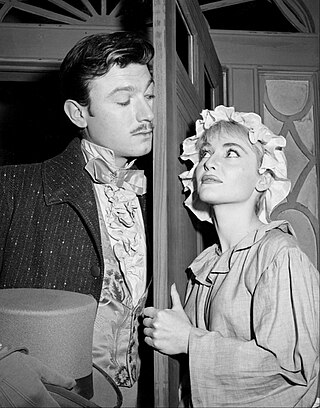
The Alcoa Hour is an American anthology television series that was aired live on NBC from October 16, 1955, to September 22, 1957.

Ford Theatre, spelled Ford Theater for the original radio version and known, in full, as The Ford Television Theatre for the TV version, is a radio and television anthology series broadcast in the United States in the 1940s and 1950s. At various times the television series appeared on all three major television networks, while the radio version was broadcast on two separate networks and on two separate coasts. Ford Theatre was named for its sponsor, the Ford Motor Company, which had an earlier success with its concert music series, The Ford Sunday Evening Hour (1934–42).
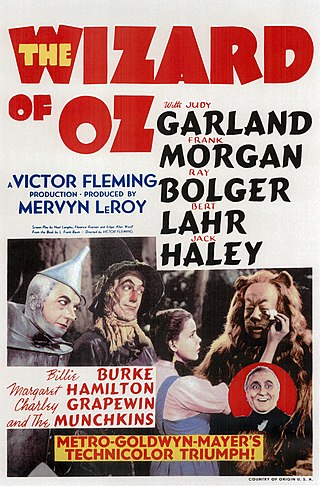
The Wizard of Oz, produced by Metro-Goldwyn-Mayer (MGM), was first released in theatres on August 15, 1939. The film was then re-released nationwide in 1949, and once more in 1955. The Wizard of Oz was broadcast on television for the first time on Saturday, November 3, 1956. The film was shown as the last instalment of the CBS anthology series Ford Star Jubilee. Since that telecast, The Wizard of Oz has been shown by CBS, NBC, The WB, and several of Ted Turner's national cable channels. The film has never been licensed to any local affiliate broadcast TV station. From 1959 to 1991, the showing of The Wizard of Oz was an annual tradition on American commercial network television. During these years, the film was always shown as a television special.
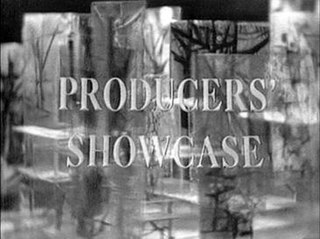
Producers' Showcase is an American anthology television series that was telecast live during the 1950s in compatible color by NBC. With top talent, the 90-minute episodes, covering a wide variety of genres, aired under the title every fourth Monday at 8 pm ET for three seasons, beginning October 18, 1954. The final episode, the last of 37, was broadcast May 27, 1957.
Tonight on Broadway is a weekly television show that ran from 1948 to 1949 on the CBS Television network. It premiered locally in New York City on April 6, 1948, and became a network show on April 20, 1948.
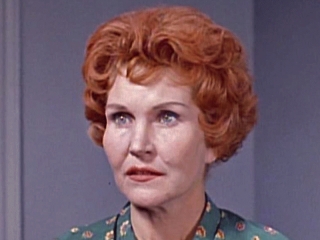
Startime is an anthology show of drama, comedy, and variety, and was one of the first American television shows broadcast in color. The program was aired Tuesday nights in the United States on the NBC network in the 1959–60 season.
Steve Randall is an American detective television series starring Melvyn Douglas. The series' 13 episodes were initially seen in syndication during the summer of 1952, before being picked up and rerun by the DuMont Television Network from November 7, 1952, to January 30, 1953. CBS subsequently ran 9 of the same 13 episodes again from June 16, 1953, to August 11, 1953.
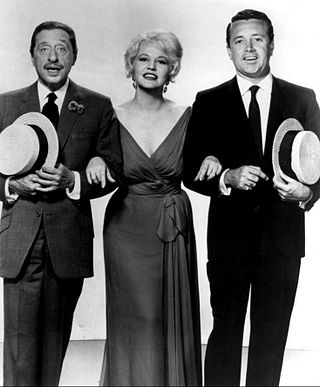
The DuPont Show of the Week is an American television anthology drama series that aired on NBC from September 17, 1961 to September 6, 1964. During its time on the air, the program "was NBC's late Sunday evening 'class' showcase".

High Tor is a soundtrack album featuring Bing Crosby, Julie Andrews and Everett Sloane. It was primarily taken from the soundtrack of the Ford Star Jubilee TV film aired on March 10, 1956 by CBS. A musical adaptation of Maxwell Anderson’s play of the same name, the soundtrack album was released in 1956 by Decca Records, and the album was later issued on CD by Stage Door Records in 2017.

The Ford 50th Anniversary Show, also known as The American Road, was a two-hour television special that was broadcast live on June 15, 1953, from 9 p.m. to 11 p.m. Ford Motor Company purchased two hours of prime time from both NBC and CBS for an entertainment extravaganza celebrating the company's 50th anniversary. The program was presented without commercial interruption.
Hollywood Opening Night is an American anthology television program that was broadcast on CBS in 1951-1952 and on NBC in 1952-1953. The NBC version was the first dramatic anthology presented live from the West Coast. Episodes were 30 minutes long.
Inside U.S.A. With Chevrolet is an American television revue-style variety program that was broadcast on CBS September 29, 1949 - March 16, 1950. The program was not related to the book with that title or the Broadway revue of the same title.
Guy Lombardo's Diamond Jubilee is an American musical television program that was broadcast on CBS from March 20, 1956, until June 19, 1956.












